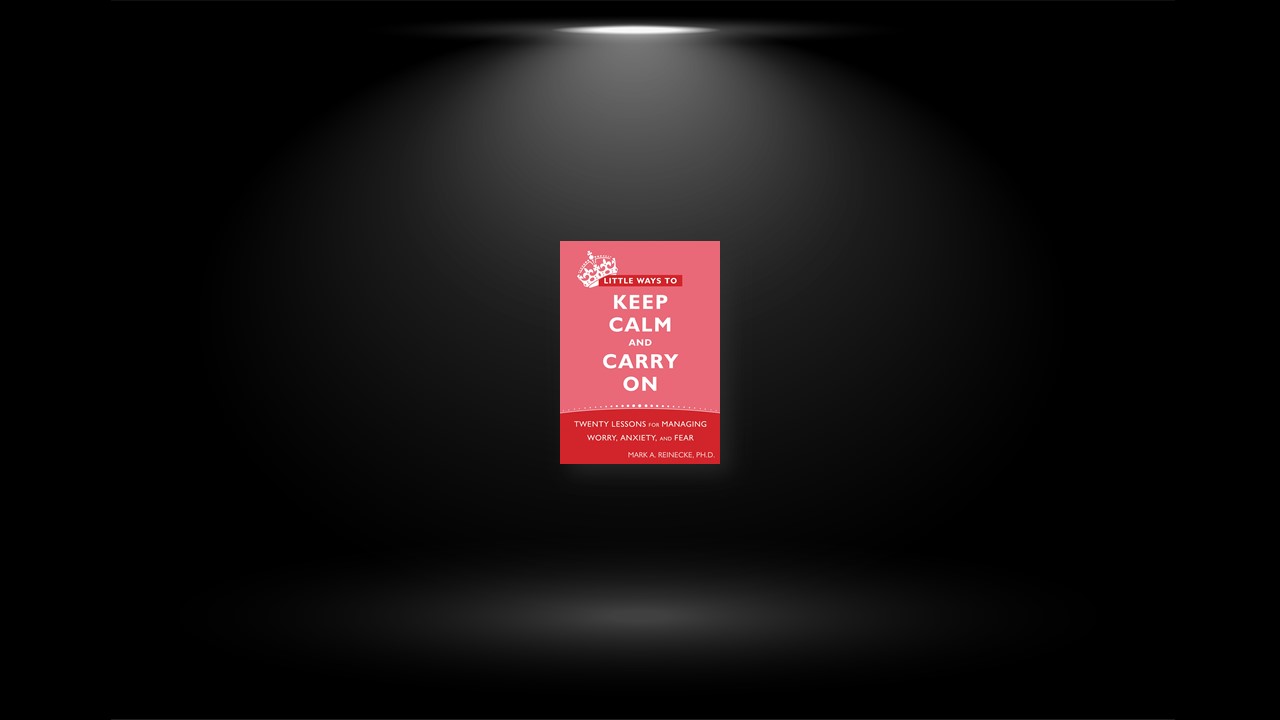Anxiety is adaptive. It signals a perceived threat. How anxious you become depends on two things: How significant you perceive the threat to be. Your perceived ability to cope—that is, how well you think you can manage this threat. You control these two perceptions. If you change them, you can feel less anxious.
Anxiety is part of a biologically based system. Because physiological, cognitive, and behavioral changes are also in play, anxiety is more than just a feeling. To successfully manage anxiety, you need to address all three parts of the system. Some anxiety is good, but continual anxiety can wear down the body, both physically and mentally, potentially leading to indecisiveness, depression, and serious illness.
Size up the situation by gathering accurate facts and making an accurate assessment. Identify exactly what you fear will occur, and determine the likelihood that it will happen. Don’t overestimate; base your decisions (and emotions) on accurate, valid numbers and assessments of risk.
The future is unknowable; there are no guarantees. Feeling secure (and less anxious) requires us to accept ambiguity and our inability to predict the future. True security comes from within, not from without; it comes from perceiving ourselves as having personal “efficacy” or a sense of confidence in our ability to manage important events in our lives. When you feel anxious or worried, it’s essential to recognize that you can control how you steer your thoughts and perceptions; you are always the one in the driver’s seat of your life.
When something bad happens or you perceive a threat, how terrible you assess the potential outcome to be filters your reaction. Quite often we jump to the worst-case scenario. Although thinking about these potentially disastrous scenarios can serve a useful function, it comes at a cost: it unnecessarily magnifies our feelings of worry and anxiety. Once again, you control this process. You control how you perceive the threat. However useful it is to be aware of dangers and risks in your world, it’s also helpful to disengage from them when the risk has passed.
When a threatening event occurs, determine realistically whether you played a role in causing it and how much influence you have over it in the future. Don’t take on responsibility for things that are outside your control. If you did play a role in causing the problem, take responsibility, be accountable, and learn from your mistake. Then move on. Don’t become mired in self-doubt and self-recrimination. Self-acceptance allows you to move forward with greater confidence. Recognize that expending your mental resources against situations where you have no influence makes you less capable of dealing with life’s challenges.
The first step to dealing with intrusive, negative thoughts is to understand that they are both normal and common. Your brain put those thoughts there, but you don’t have to deal with them. You can think of them as you would junk mail, telemarketers, or Internet pop-up ads—they’re annoying but unimportant. Disengage from them. Don’t dwell on the evil monkeys. Don’t tell yourself, “I have to make them stop.” Rather, let them be. Allow distressing thoughts to come and go as if they were clouds drifting across the sky or a leaf floating by in a cool summer stream. Don’t hold on to them, challenge them, fight against them, or push them away. They’re just thoughts.
Dwelling on problems not only magnifies anxiety but also undermines problem solving. When you begin to ruminate or dwell on your problems, take action—do something. Refuel your brain by engaging in activities that provide you with feelings of mastery or accomplishment. Don’t withdraw or isolate yourself from others. Keep in contact with friends and family. Turn to others for support and for fresh ideas and perspectives.
There are two kinds of worry: productive and unproductive. Unproductive worry can be very unpleasant and is accompanied by high levels of anxiety and loss of focus on even simple tasks. The difference between productive and unproductive worry is simple. Productive worry results in an action plan, whereas unproductive worry just causes you to mull a problem over without coming to a solution. Identify whether or not the problem truly has a solution you can implement. If you do not have any influence or control over the outcome, you have to relinquish control and let the thought “float away.”
The meanings we give to life experiences determine our emotional reaction and how we respond. It’s important to clarify what these distressing thoughts are and evaluate them systematically. Make your beliefs, attitudes, thoughts, and expectations account for themselves. Are they true? Are they consistent with the evidence of your life? Is it reasonable and helpful to look at things this way? Is there another way of looking at things?
Despite offering momentary relief, avoiding problems and withdrawing from stressors typically exacerbate life’s problems. Avoidance and withdrawal have several consequences: they reinforce the belief that the problem really was overwhelming and unmanageable, they solidify the belief that you really are weak and unable to cope, and they deprive you of the opportunity to practice coping skills and to develop feelings of control, competence, and efficacy. Remember, what we fear doing is what we should do. Bring it on!
Generalized anxiety—worrying about a wide range of problems—may stem from a general sense of personal vulnerability; the world seems like a dangerous place in many ways. Worrying about a large number of minor problems can serve a function. It can serve as a form of cognitive avoidance, protecting us from the anxiety that accompanies reflecting on larger problems and issues that are truly frightening. The best way to cope is to cut to the chase: Ask, “What’s the real thing I’m worried about? How can I manage this?” Don’t avoid it. Take it on.
When you’re confronted by a serious problem you have no control over, the wise approach is to flow with the current. Keeping an open mind as life reveals itself is the key to finding calm after the storm. Recognize the difficulties and inconveniences, but also recognize the gifts in life.


